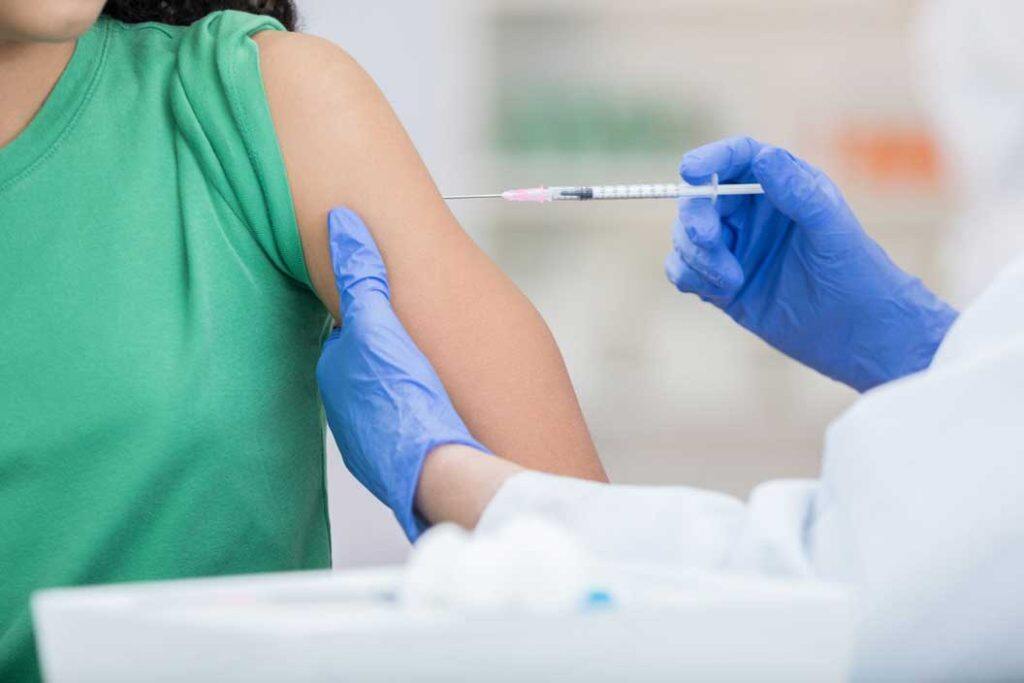UBC medicine researchers share how new vaccines are handled to ensure they are safe and effective against evolving strains of influenza and SARS-CoV-2.


It’s vaccination season, and scientists have been hard at work ensuring the latest vaccines are safe and effective against evolving strains of influenza and SARS-CoV-2.
Vaccines undergo changes from year to year. For example, one flu strain that has not been seen for several years has been left out of some vaccines this year. And of course, the constant evolution of SARS-CoV-2 demands that vaccines keep pace.
Dr. Manish Sadarangani (he/him) and Dr. Julie Bettinger (she/her) are two UBC faculty of medicine researchers involved in these efforts. Dr. Sadarangani’s research includes laboratory studies and clinical trials of new vaccines, while Dr. Bettinger is lead investigator for the CANVAS network, which provides ongoing monitoring of vaccine safety after vaccines have been approved for use.
We spoke with them about how new vaccines are handled.
What considerations are involved in creating and optimizing vaccines for influenza and COVID each year?


MS: Influenza and COVID are caused by viruses that change over time. With flu, every year the virus is genetically a little bit different. With SARS-CoV-2, we’re still trying to learn how quickly the virus will change from year to year. The vaccines have to change to keep up with that.
For influenza vaccines in the northern hemisphere, the decision of which strains to put in the vaccine comes in March. That’s based on what strains looked like at the end of the previous season and how fast the virus seems to be evolving. The timeline to make vaccines once you’ve decided on the recipe is five to six months, so the vaccines are ready in the fall.
What is the process for developing, testing and approving a new vaccine?
MS: All new vaccines start off in a lab environment and undergo extensive testing in animal studies before they’re tested in humans. They then go through clinical trials, starting with Phase 1—a small number of healthy adults—to test for safety in humans.
Once a vaccine is found to be safe, it goes into Phase 2 trials. These are usually hundreds of people, including healthy adults as well as the target group for the vaccine. For example, if it’s a pediatric vaccine, you would see children in Phase 2 trials.
Phase 3 clinical trials involve tens of thousands of participants, with a focus on both safety and how well the vaccine works.
All that data is submitted by the vaccine developer to Health Canada, where they decide whether or not to approve the vaccine for marketing to the public.
How does Canada’s vaccine safety surveillance system compare with other countries?
JB: Most high-income countries have some type of vaccine safety surveillance for approved vaccines. Canada has CANVAS, which collects electronic information directly from vaccinated and unvaccinated individuals to look for any vaccine safety signals. Australia and the U.S. have similar participant-based digital reporting systems, but they don’t include an unvaccinated group, so it can make seeing a signal more difficult.
How do you address common concerns you hear from people about vaccine safety?
JB: Most safety concerns we hear about are a result of misinformation (incorrect information) and disinformation (information that is purposefully a lie). Addressing these concerns with more information is not very helpful. The best way to address someone’s concerns is through a trusted health-care provider. If care is provided in a safe, non-judgmental way that allows the person to have a conversation and ask questions, many concerns can be addressed.
What are the next steps in improving vaccination strategies for SARS-CoV-2 variants and evolving strains of influenza?
MS: The main thing people have been working on for influenza, and are now working on for COVID as well, is trying to see if there are ways to produce vaccines that will protect against all strains of flu and all strains of COVID. Up to now, that’s been very challenging.
It’s the constant battle that we have in infectious diseases, of the human immune system versus the evolution of the pathogen. Hopefully, in the next 10 years we will see significant progress. It would be great to have vaccines for these viruses that change genetically over time, so they could be given less frequently than every single year.
Interview language(s): English








































